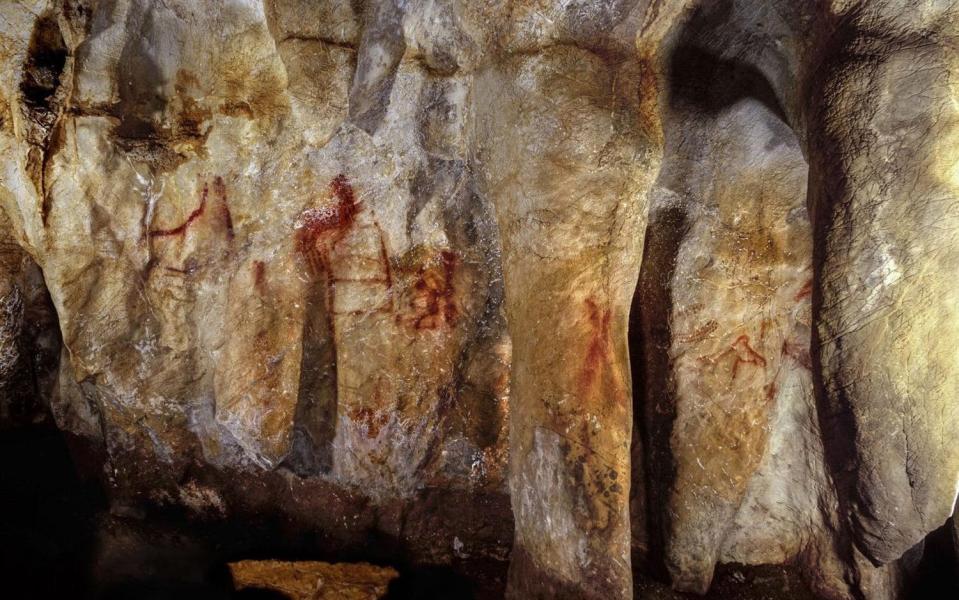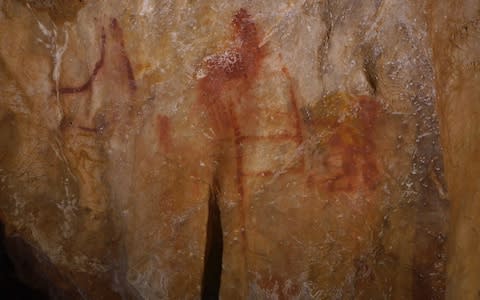Neanderthal art was far better than previously thought as scientists find they made earliest cave paintings

"Neanderthal" has become an insult for someone lacking in culture and refinement.
But we homo sapiens may be unfairly maligning our prehistoric cousins, as researchers have found that they were more accomplished artists than previously thought.
Academics have found that cave paintings in Spain were created more than 64,000 years ago – 20,000 years before modern humans arrived in Europe.
The paintings, the oldest cave art ever discovered, include animals, dots and geometric signs - and are much more sophisticated than anything previously attributed to Neanderthals.
The team used a method known as uranium-thorium dating, which is more accurate than radiocarbon dating, to establish the age of the Paleolithic paintings.

A Neanderthal handprint covered by calcite, right; and a colour-enhanced version
Alistair Pike, professor of Archaeological Sciences at the University of Southampton and co-director of the study, said: “Soon after the discovery of the first of their fossils in the 19th century, Neanderthals were portrayed as brutish and uncultured, incapable of art and symbolic behaviour, and some of these views persist today.
“The issue of just how human-like Neanderthals behaved is a hotly debated issue. Our findings will make a significant contribution to that debate.”
Joint lead author Dr Chris Standish, an archaeologist at the University of Southampton, added: “This is an incredibly exciting discovery which suggests Neanderthals were much more sophisticated than is popularly believed."
The earliest symbolic artefacts - decorative objects with carvings - are around 70,000 years old and were found in Africa, but have been attributed to homo sapiens.

Neanderthals living in Europe 40 to 45,000 years ago had used body ornamentation but researchers previously suggested that this was inspired by homo sapiens who had at the time just arrived in Europe.
Separate research published last week suggested that the Neanderthals' inability to create sophisticated art could provide clues to their extinction, but this study appears to challenge that hypothesis.
Researchers said the findings challenge the accepted definition of what it means to be human, and could lead to the reexamination of other European cave art.

Joint lead author Dirk Hoffmann, of the Max Planck Institute for Evolutionary Anthropology, said “The emergence of symbolic material culture represents a fundamental threshold in the evolution of humankind. It is one of the main pillars of what makes us human."
Study co-author Paul Pettitt, of Durham University, added: “Neanderthals created meaningful symbols in meaningful places. The art is not a one-off accident.
“We have examples in three caves 700km apart, and evidence that it was a long-lived tradition. It is quite possible that similar cave art in other caves in Western Europe is of Neanderthal origin as well.”

 Yahoo News
Yahoo News 